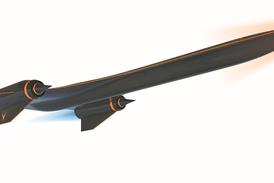SilkAir's Mike Barclay has had to do a lot of defending of his airline since he became chief executive early last year. Since then, as new low-cost carriers have taken flight, many have predicted the eventual demise of the short-haul arm of Singapore Airlines (SIA). But Barclay insists they are wrong.
"In terms of business planning I am taking the worst-case scenario that they all thrive," he says of the three new Singapore-based airlines that launched operations last year.
"But we are positioning ourselves quite differently and we have a different catchment than the low-cost carriers – we have a worldwide catchment of customers. We also have a different proposition in that we have a business class, we have economy with full service and in-flight entertainment, and we really are aiming at a different part of the market. The best way to look at it is we're serving one integrated network with SIA. As a group we serve 49 destinations within that 5h radius – we serve 25 and SIA 24 destinations. We are basically serving the routes which are thinner for traffic, and we serve them at a lower cost. We make a good margin and have a good level of profitability."
SilkAir today operates 11 Airbus A319s and A320s largely to secondary leisure destinations within Asia, with a "middle-market" product considered better than average. It is often criticised by the general public for having high fares, particularly on routes where there is little competition, and the cynics have predicted it will be badly hurt by low-cost fare levels. The predictions of its ultimate demise increased after SIA became a 49% shareholder in new no-frills operator Tiger Airways, despite the insistence of Tiger's backers that it operates entirely independently.
SilkAir has yet to face much in the way of new direct challenges as the only routes on which it has fresh competition are to the Thai destinations of Chiang Mai and Phuket, which are now served by Tiger. But the incumbent has been offering more fare specials over the past year. Barclay is also confident new competitors will not take away its business when they do secure traffic rights enabling them to compete head-to-head.
A key differentiator, he says, is that SilkAir is not reliant on point-to-point, but has a strong level of interlining, with around half of its passengers connecting, many from SIA. "Our commitment is to keep that high, as it gives us much more sustainability and ties in with the idea that we are serving an integrated network with the parent company," says Barclay. "If you didn't have a SilkAir business model you would question quite a few of the points we are serving, in other words whether SIA would have a presence there. That is the whole point – to extend the reach of the group to the short-haul arena."
Barclay says the focus in the years ahead will largely be on boosting frequencies to reduce unit costs rather than opening many new routes. Plans still call for capacity growth of 11-12% annually, and five more A319/A320s are on firm order with Airbus. Barclay says SilkAir has even benefited in some ways from the introduction of low-cost carriers.
"There is a lot to learn in terms of cost management from the low-cost carriers. That doesn't mean you become one, but there are some really good ideas coming out of that model. Where there are good ideas we are applying them," he says. "Our business model is very solid. Low-cost carriers based in Singapore will bring more competition but equally we already have competition on a lot of our routes. They are just extra players in the equation."
Source: Airline Business























